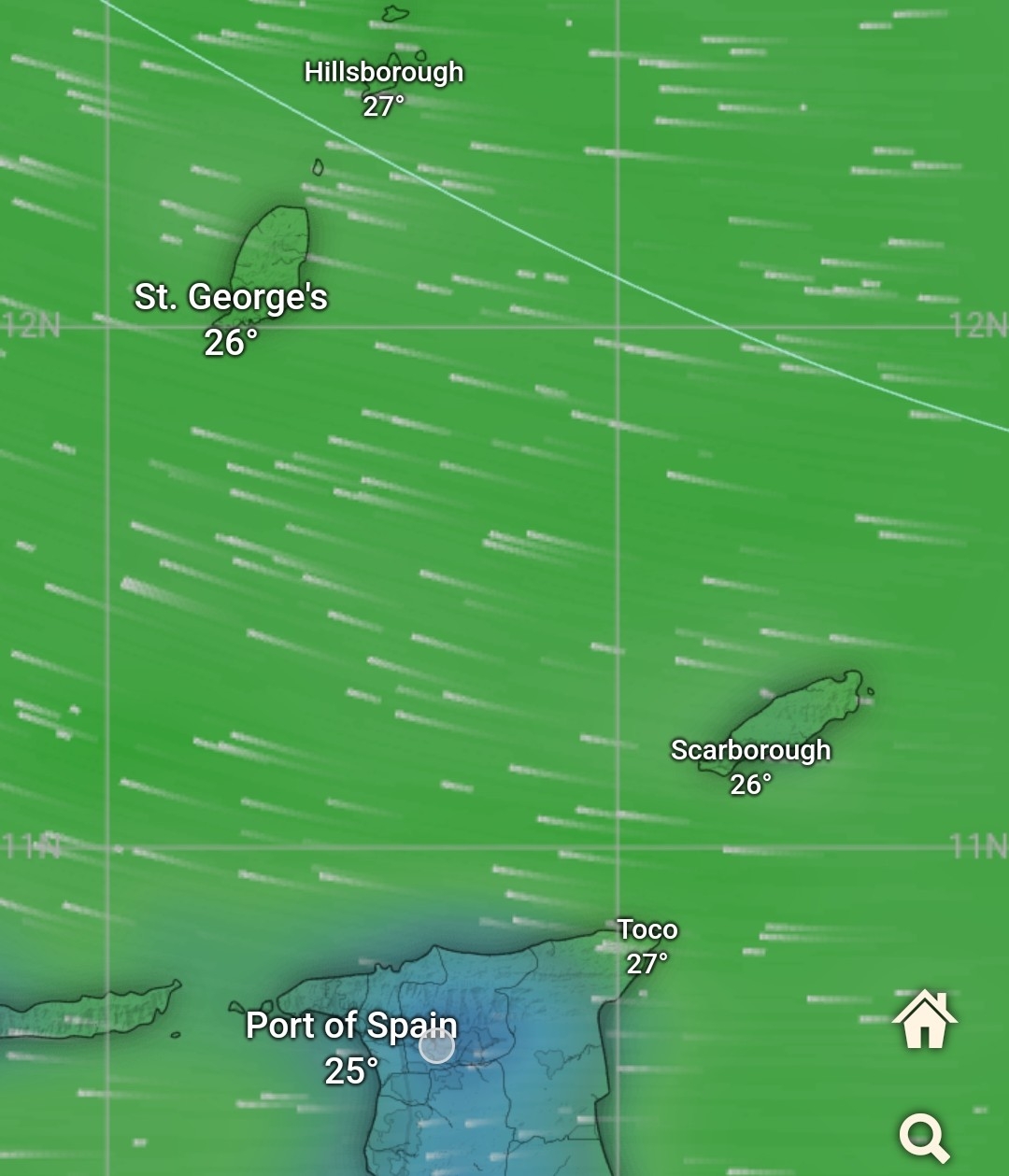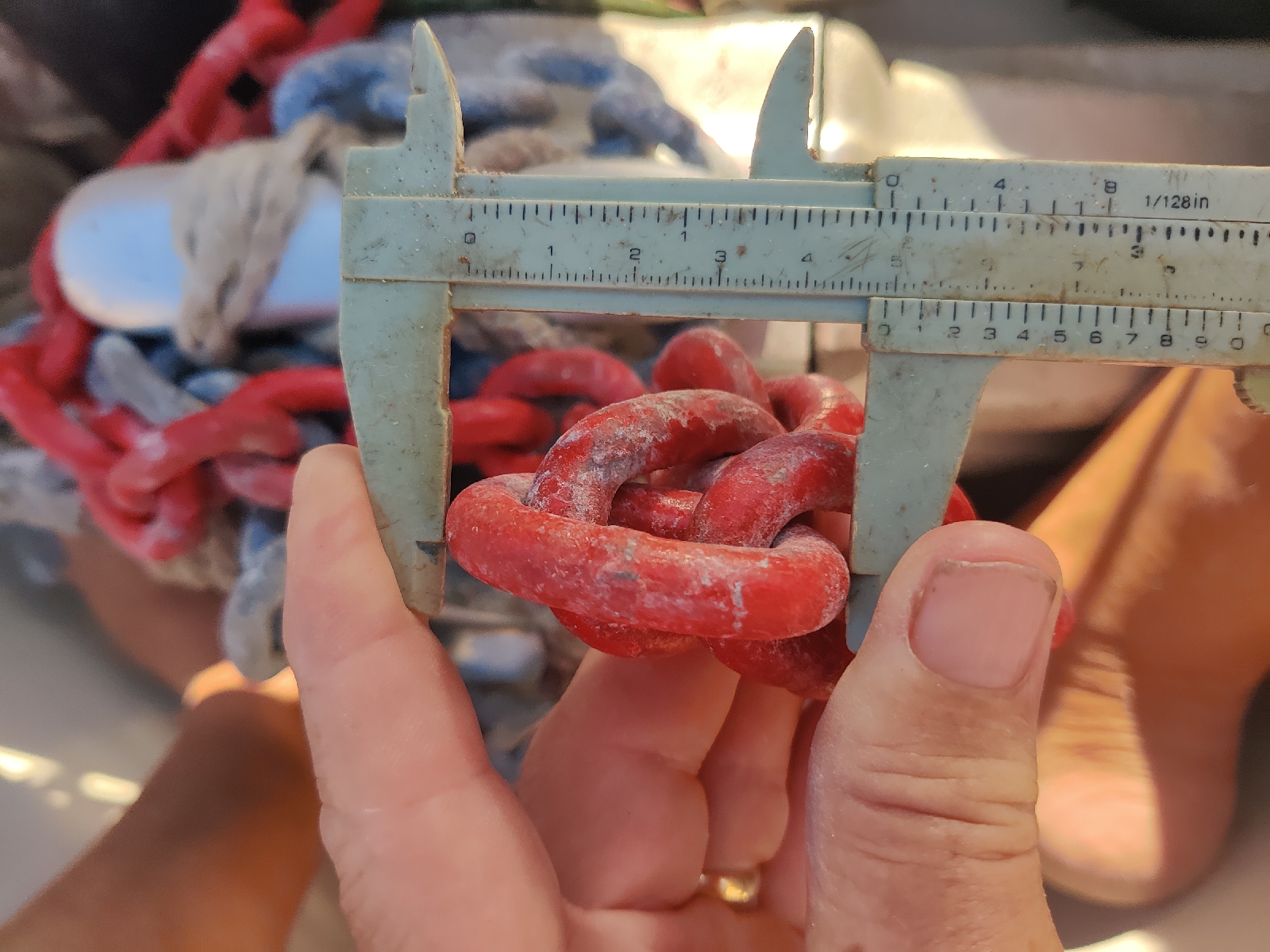Everyone we had come across so far who had been to Tabago had raved about the island and so I was particularly keen to make the trip if at all possible.
It's only 80 miles south east of the south coast of Grenada but the trade winds in these parts are usually from the east or south of east which would make for a long uncomfortable beat to Windward and could add 50% or more to the length of the trip. For the last couple of weeks the winds had been like this...
That's Tabago with the Capital Scarborough marked, our destination, Charlotteville, is on the extreme top right corner.
Winds like that would mean a direct beat into them ...
In fact, the challenge of making progress to windward is even greater than the above screen shots suggest...
A boat's forward momentum creates a relative wind 'blowing' in the opposite direction of travel. That means, the boat and those on it, experience an 'apparent' wind, not the 'true' wind. The net effect of this when the true wind is blowing from in front of the beam (side), is an apparent wind which is both stronger and comes from further forward of the beam than the true wind. [When the true wind is from behind the beam, the apparent wind comes from further forward than the true wind but is less strong. The exception to that is when the true wind is coming from directly behind the boat, then, the apparent wind direction is the same as the true wind direction!]
Modern cruising boats can sail as close as about 45° to the apparent wind; Bonny probably does no better than 55°. She has a lot of surface area under the water and a long keel which makes her very seaworthy and safe; but combined with her rig (sail plan) she is less efficient to windward.
'Leeway' (the extent to which a boat is pushed sideways by the wind) is another factor to be taken into account when planning and undertaking a passsge. Thankfully Bonny's long deep(ish) keel is reasonably good at reducing leeway but you can see from the current screenshot below, that the current, combined with easterly winds, would push her off course to the south west.
A further complication is that for the first third of the passage the boat would be set further south west of its heading to Charlotteville by a strong current flowing in that direction.
In the screen shot below the grey/blue colour to the south east of Grenada's southern tip, represents a 2 knot current. Factor in the fact that our sustained speed through the water wouldn't be much more than 5 knots and you can see we would be lucky to make any progress at all if we tried to beat directly into the wind. Once through that section we would experience a current flowing directly against us, but fortunately a much weaker one of about half a knot.
My 'crew' (🤣) clearly did not relish the prospect of taking on such conditions and so if we were to make the trip, we would need to wait for a better wind angle. Ideally, we could do with winds north of north east which would give us a beam reach to Charlottville.
I'd therefore been keeping an eye on the weather forecast for the last week or so and fortunately a suitable weather window was forecast to open up for 24 hours or so commencing Friday 1st March. It turned out not to be quite perfect, but we both agreed it was doable. It looked something like this....
Such winds gave us a reasonable shout at making Charlottville without having to beat all the way there...
The bend in the track line is unintended but you get the idea - the true wind direction would be just forward of the beam whilst our progress into it would create an apparent wind direction from further forward. The green colour by the way, indicates expected wind speeds of 15-20 knots. 15 knots is a little stronger than ideal, 20 knots is when we start to consider reducing sail.
We had one further minor hurdle to overcome before leaving Prickly Bay. On arrival there, the anchor chain didn't run out smoothly and when we hoisted it, (because it failed to dig in on the first attempt) it kept jumping off the 'gypsy'.
Fortunately the local Chanderlry stocked replacements. It was crucial that we got one that fitted our windless and our chain size. After taking the key measurements...
I went off to buy the replacement which we fitted on the morning of our departure - Friday 1st March. We also had to check out with Customs and Immigration and top up our fuel and water tanks.
Finally we were ready to leave at around 1400 and by 1500 we had all sail set and were on course (ish) for Charlotteville.
As it turned out we had to sail hard on the wind for all 19 hours of the passage in order to stay close to our desired track. The wind direction and strength was more or less as forecast. I decided not to reef. At times in some of the stronger gusts, we were perhaps a little over canvassed, but overall I think full sail produced the best performance to winward in the prevailing conditions. The Hydrovane certainly took it in its stride which is a pretty good indication that the sail plan was appropriate.
The passage was quite lively and wet at times - particularly when we overlooked the fact that the fore-hatch was open (the dinghy was stowed over it). As usual, Mick managed to be on watch in the heaviest weather and got a good soaking a couple of times when solid water swept over the boat!
The photo below shows our planned route in blue and our actual track in yellow. You can see the effect of the current on us during the early stages of the passage and of the wind veering further south in the latter stages, forcing us into making one tack to get into Charlotteville...














No comments:
Post a Comment